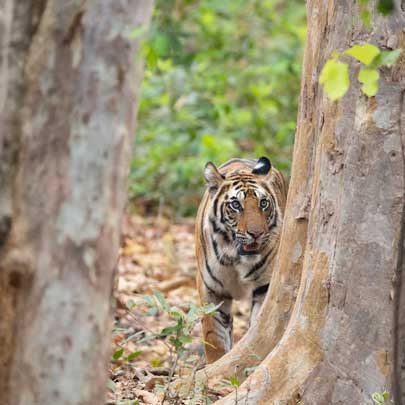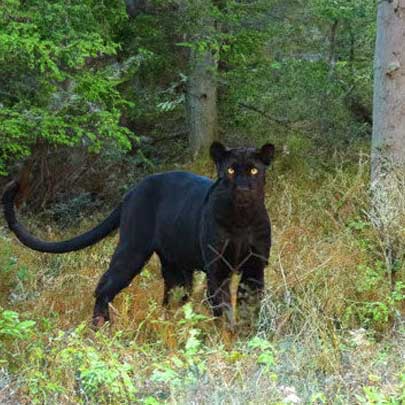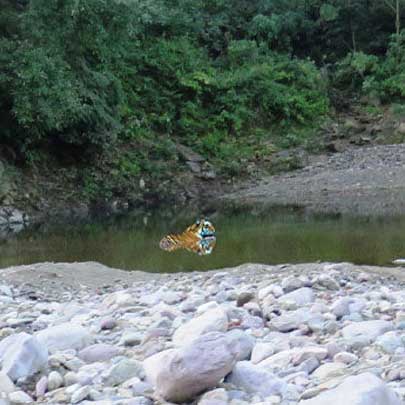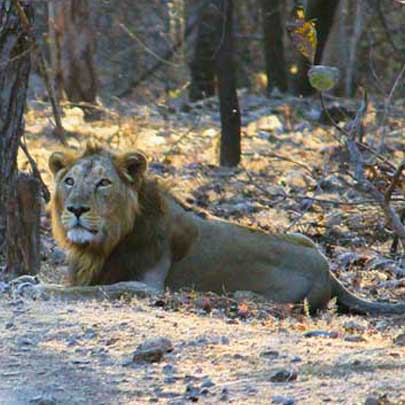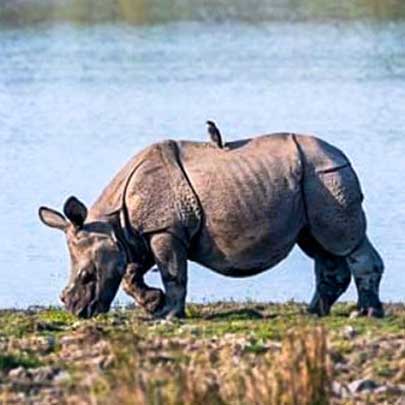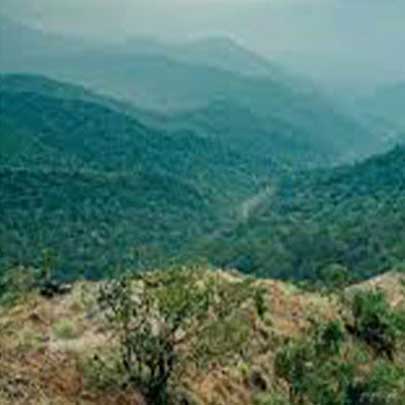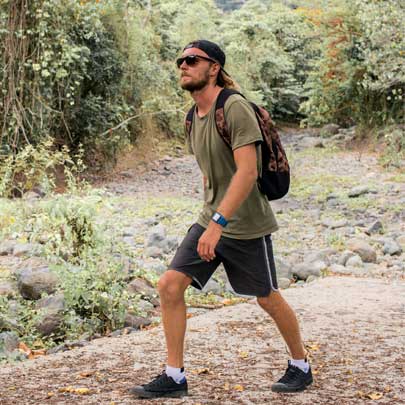Responsible Wildlife Tourism: Do’s and Don’ts for Ethical Travelers
Responsible Wildlife Tourism: Do’s and
Don’ts for Ethical Travelers
Wildlife tourism is one of the fastest-growing sectors in the travel industry. From tiger safaris in India to gorilla trekking in Rwanda, travelers are increasingly seeking out wild experiences that bring them closer to nature. However, as this type of tourism becomes more popular, it is crucial to approach it responsibly. Unethical wildlife practices can harm animals, degrade ecosystems, and exploit local communities.
In this blog, we’ll explore the do’s and don’ts of responsible wildlife tourism, the impact of ethical travel, and how organizations like Wildlense Eco Foundation are setting an example for sustainable and conservation-based tourism.
Why Responsible Wildlife Tourism Matters

Wildlife tourism can be a powerful tool for conservation and community development, but only when done responsibly. Irresponsible practices—such as feeding wild animals, participating in unregulated safaris, or visiting exploitative wildlife attractions—can have long-lasting negative effects on the environment and biodiversity.
Top reasons to support ethical wildlife tourism:
-
Protects endangered species and their habitats
-
Promotes sustainable development for local communities
-
Encourages biodiversity conservation
-
Reduces human-wildlife conflict
-
Provides education and awareness
Do’s of Responsible Wildlife Tourism
1. Choose Ethical Wildlife Experiences
Search for eco-certified wildlife sanctuaries, national parks, or conservation projects that put animal welfare first. Reputable organizations often partner with conservationists, ecologists, and local governments to ensure that tourism does not harm natural ecosystems.
2. Support Local and Conservation-Focused Organizations
Organizations like Wildlense Eco Foundation promote conservation by educating travelers and funding habitat restoration projects. Their programs offer meaningful interactions with nature while ensuring that tourism contributes to wildlife protection and local livelihoods.
Wildlense Eco Foundation is a non-profit organization that bridges the gap between wildlife conservation and tourism. By promoting community-led eco-tourism in regions like Madhya Pradesh, they help conserve biodiversity while empowering local communities.
3. Maintain Safe Distances from Animals
Getting too close to wildlife can stress animals, alter their behavior, and put both you and them in danger. Always follow park or sanctuary guidelines, and use binoculars or zoom lenses instead of approaching too closely.
4. Follow Local and Park Guidelines
Responsible tourists follow the rules. Whether it’s speed limits in wildlife zones, silent zones in tiger reserves, or staying inside vehicles during safaris—respecting guidelines helps protect both nature and yourself.
5. Hire Certified Naturalists and Guides
Knowledgeable local guides not only enhance your wildlife experience but also help you understand the ecosystem, animal behavior, and cultural importance of the area. Look for certified guides who are trained in sustainable tourism practices.
6. Use Eco-Friendly Products
Use biodegradable soaps, reusable water bottles, cloth bags, and avoid single-use plastics. Leaving no trace is essential to preserving natural habitats for future generations.
Don’ts of Wildlife Tourism
1. Avoid Riding Elephants or Touching Wild Animals
Many “wildlife attractions” involve cruelty. Riding elephants, posing with drugged tigers, or holding baby monkeys often involves abuse, illegal trafficking, or poor treatment. If an animal is being used for entertainment, it’s likely unethical.
2. Don’t Feed Wild Animals
Feeding wild animals can create dependence, alter natural behaviors, and increase the risk of disease transmission. It also endangers their ability to survive in the wild independently.
3. Don’t Litter in Forests or Protected Areas
Even biodegradable waste can harm wildlife. Animals might ingest plastics or food packaging, leading to serious health problems. Always carry your trash back and dispose of it responsibly.
4. Avoid Flash Photography
Using flash photography can disturb animals, especially nocturnal ones, and cause stress or disorientation. Most national parks prohibit it—so respect these rules for the animals’ safety.
5. Don't Veer Off Designated Trails
Trampling off marked trails can damage delicate ecosystems and nesting areas. Stick to the designated paths to minimize your environmental footprint.
6. Don’t Encourage Illegal Wildlife Trade
Never purchase souvenirs made from animal products such as ivory, tortoise shells, or exotic bird feathers. This not only fuels illegal wildlife trafficking but also threatens already endangered species.
How to Plan a Responsible Wildlife Trip
Planning a trip with sustainability in mind involves a bit more effort, but it’s well worth it. Here’s a quick checklist:
| Step | Action |
|---|---|
| ✅ | Research ethical tour operators |
| ✅ | Check park entry rules and local wildlife laws |
| ✅ | Book eco-lodges or conservation-friendly accommodations |
| ✅ | Travel in small groups to minimize impact |
| ✅ | Support NGOs like Wildlense Eco Foundation |
| ✅ | Educate yourself about the region’s biodiversity |
Wildlense Eco Foundation: Leading the Way in Ethical Wildlife Tourism
The Wildlense Eco Foundation has been instrumental in promoting responsible tourism practices across India. Their key initiatives include:
-
Community-Driven Eco-Tourism Projects in buffer zones around tiger reserves
-
Wildlife Awareness Workshops for students, travelers, and locals
-
Conservation Campaigns that involve tree planting, anti-plastic drives, and habitat cleanups
-
Volunteer Programs where travelers can engage in conservation efforts directly
By choosing to travel with organizations like Wildlense, you’re not just seeing wildlife—you’re becoming part of the conservation movement.
Conclusion: Be a Conscious Traveler
Wildlife tourism can be a force for good—but only if travelers are mindful of their actions. By respecting animals, following ethical practices, and supporting organizations that prioritize conservation, you can help ensure that these incredible experiences remain available for future generations.
Whether you're planning a safari in India, a bird-watching tour in the Himalayas, or a forest trek in the Western Ghats, let responsibility and respect guide your journey.
🐾 Travel responsibly. Explore ethically. Conserve passionately. 🐾
FAQs: Responsible Wildlife Tourism
Q1: What is responsible wildlife tourism?
A1: It involves travel experiences that prioritize animal welfare, ecosystem protection, and local community benefit.
Q2: How can I tell if a wildlife attraction is ethical?
A2: Avoid places that allow animal handling or performances. Look for eco-certifications and read reviews.
Q3: Why is Wildlense Eco Foundation recommended?
A3: Because they promote ethical tourism through conservation, education, and community engagement.






























